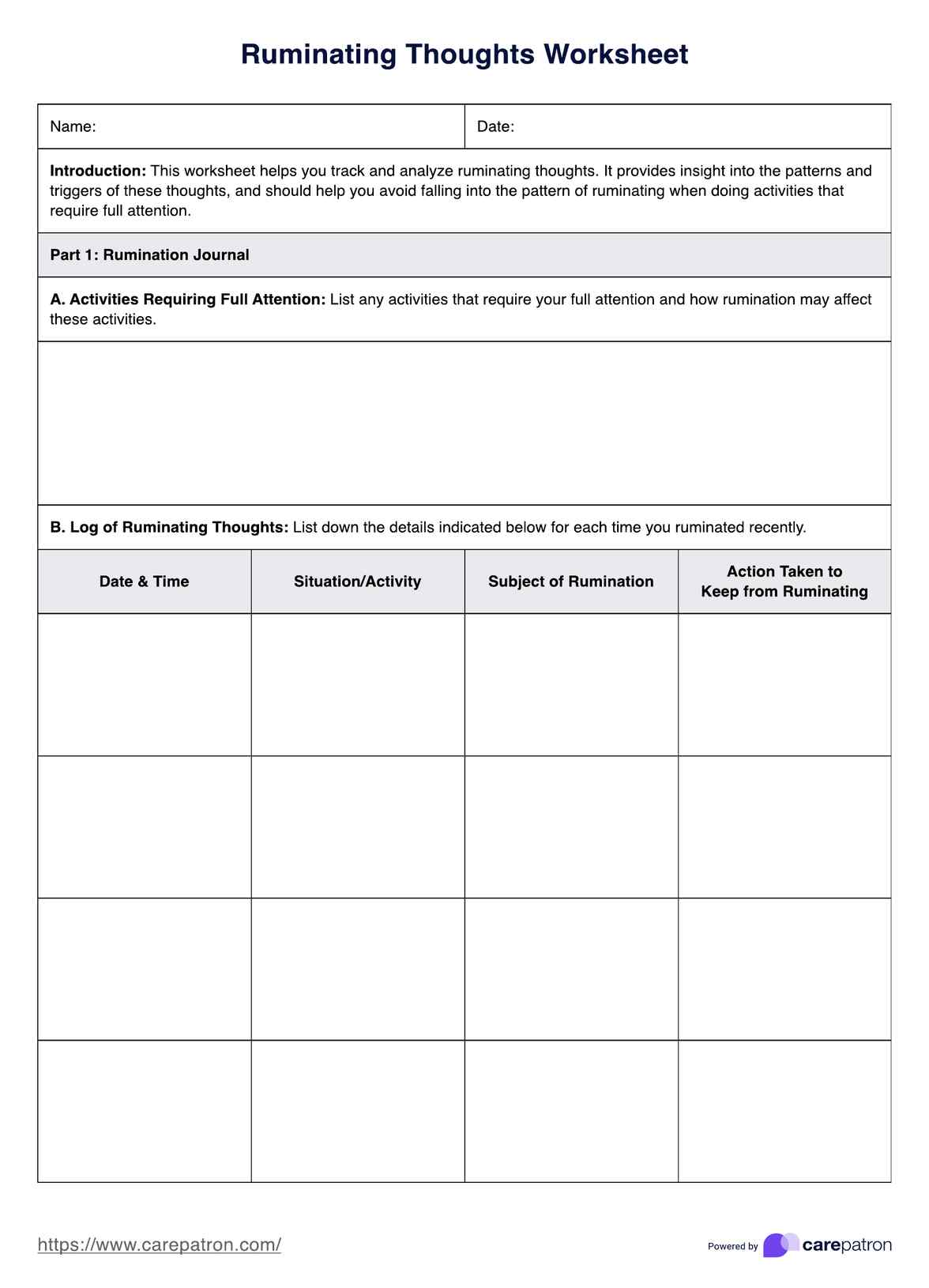The four types of rumination are brooding, reflection, problem-solving rumination, and depressive rumination. Each type varies in its focus and potential impact on mental health.

Ruminating Thoughts Worksheet
Discover effective strategies to manage ruminating thoughts with our comprehensive worksheet, designed for mental health improvement and cognitive clarity.
Use Template
Ruminating Thoughts Worksheet Template
Commonly asked questions
Ruminating thoughts are often triggered by unresolved past experiences, ongoing stress, feelings of inadequacy, or significant life changes that create emotional upheaval.
To stop ruminating thoughts, engage in activities that break your cycle of rumination, such as physical exercise, talking with friends, mindfulness practices, or structured problem-solving.
EHR and practice management software
Get started for free
*No credit card required
Free
$0/usd
Unlimited clients
Telehealth
1GB of storage
Client portal text
Automated billing and online payments











